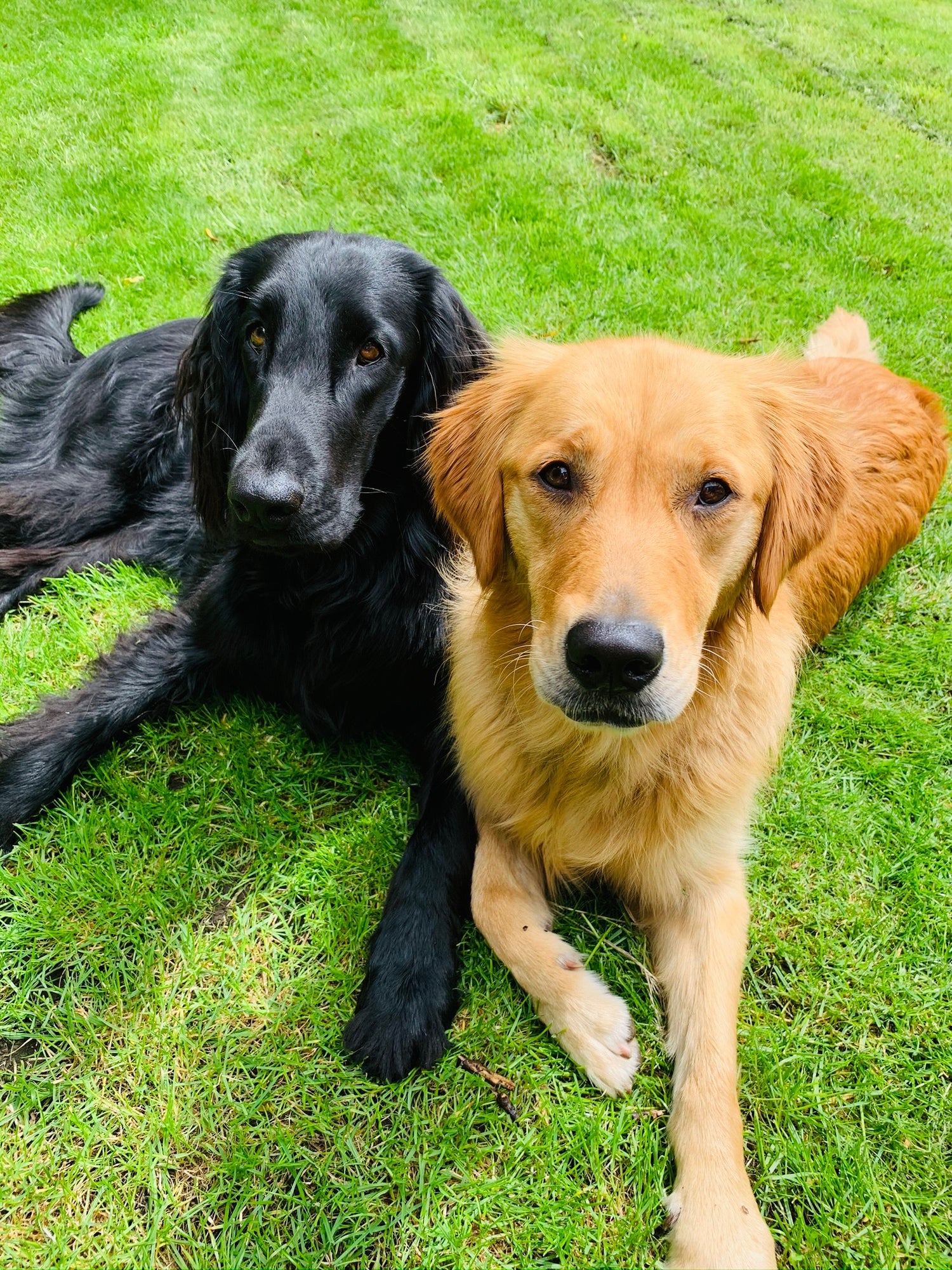Die 6 Anzeichen von Mobilitätsproblemen

Aufstehen, rennen, springen
Wenn Ihr Haustier Schwierigkeiten hat, sich aus dem Ruhezustand zu erheben oder nach einem langen Schläfchen steif wirkt, kann dies auf Gelenkprobleme hinweisen, insbesondere in der Hüfte und im Ellbogen. Hatte Ihre Katze in jungen Jahren einen Lieblingsplatz zum Dösen? Katzen lieben hohe Plätze, aber Sie werden vielleicht bemerken, dass Ihre Katze jetzt einen Stuhl zum Hochspringen nutzt oder sich langsam nach unten streckt, bevor sie herunterspringt. Oder vielleicht hat sie sich einen ganz anderen Platz ausgesucht. All das sind Anzeichen dafür, dass Ihrem Haustier das Springen schwerfällt und es Hilfe benötigt.
Müdigkeit und Inaktivität
Es mag den Anschein erwecken, dass Ihr Haustier im Alter faul wird, aber wenn es ihm schwerfällt, bei Spaziergängen mitzuhalten oder anfängt, den Garten zu meiden, ist es an der Zeit, über die Förderung der Mobilität Ihres tierischen Freundes nachzudenken. Katzen schlafen in der Regel etwa 15 Stunden am Tag, aber wenn diese Zeit langsam immer mehr wird, könnte es ein Zeichen dafür sein, dass ihnen Bewegung schwer fällt. Hunde und Katzen jeden Alters sollten spielfreudig sein. Wenn Haustiere ihren Elan verloren haben, ist es Ihre Aufgabe, ihnen dabei zu helfen, ihren Spieltrieb wiederzufinden.
Lahmheit
Dies mag offensichtlich erscheinen, aber die Anzeichen von Lahmheit können sehr subtil sein, vor allem, wenn sie auf beiden Seiten des Körpers Ihres Tieres auftritt. Achten Sie darauf, ob Ihr Haustier ein Bein gegenüber dem anderen bevorzugt. Nickt es beim Gehen mit dem Kopf? Dies könnte auf ein Problem in den Vorderbeinen hinweisen. Wenn Ihr Haustier im Stehen ein Bein mehr schont als das andere, oder statt gerade eher seitlich sitzt, könnte auch das ein Anzeichen für ein Problem sein.
Treppen
Treppen sind ein großartiger Test für die Mobilität Ihres Haustieres. Junge Haustiere laufen Treppen in der Regel blitzschnell hoch und runter. Beobachten Sie Ihr Haustier genau – wie bewegt es sich jetzt? Ist es langsam, zögert es oder zeigt es Anzeichen, dass es Treppensteigen als unangenehm empfindet? Macht es beim Herunterkommen einen Buckel oder zieht es ein Bein dem anderen vor? Wenn Sie darauf achten, wie sich Ihr Haustier die Treppe hinauf- und hinunterbewegt, können Sie die langfristige Mobilität Ihres Tieres gut im Auge behalten.
Selbstpflege
Bei steifen Gelenken kann die Selbstpflege eine Herausforderung sein. Ihr Tier kann Probleme haben, an die schwer zugänglichen Stellen heranzukommen, und es kann sein, dass Ihr Haustier weniger gepflegt aussieht. Wenn Ihr Haustier jedoch ein Gelenk häufiger beleckt als andere, könnte dies auf ein Problem an dieser Stelle hinweisen. Für Katzen kann das Hocken in der Katzentoilette zu einer Herausforderung werden, und sie können unsauber werden oder Ihr Geschäft an ungewöhnlichen Stellen verrichten. Ihr Hund hat möglicherweise Schwierigkeiten, sich hinzuhocken oder das Bein zu heben. Probleme beim Wasserlassen können auch zu Problemen mit den Harnwegen führen. Wenn Sie diese Anzeichen bemerken, sollten Sie Ihr Haustier von Ihrem Tierarzt untersuchen lassen.
Verhaltensänderungen
Niemand möchte herumgezerrt werden, wenn er sich steif fühlt. Wenn Ihr Haustier ungewöhnlich mürrisch ist oder aggressiv wird, wenn es gestreichelt wird, kann das ein Versuch sein, Ihnen mitzuteilen, dass es Probleme hat. Gibt Ihr Tier mehr oder andere Laute von sich oder vermeidet es die üblichen Streicheleinheiten? Jede Verhaltensänderung könnte darauf hinweisen, dass Ihr Haustier Hilfe braucht.
Wenn Sie Mobilitätsprobleme frühzeitig bemerken, können Sie die Gelenkgesundheit Ihres Haustiers unterstützen und seine Lebensqualität verbessern. Die tägliche Verabreichung von AntinolⓇ trägt dazu bei, dass das Glück Ihres Haustiers in Bewegung bleibt.
Holen Sie sich Antinol®️

